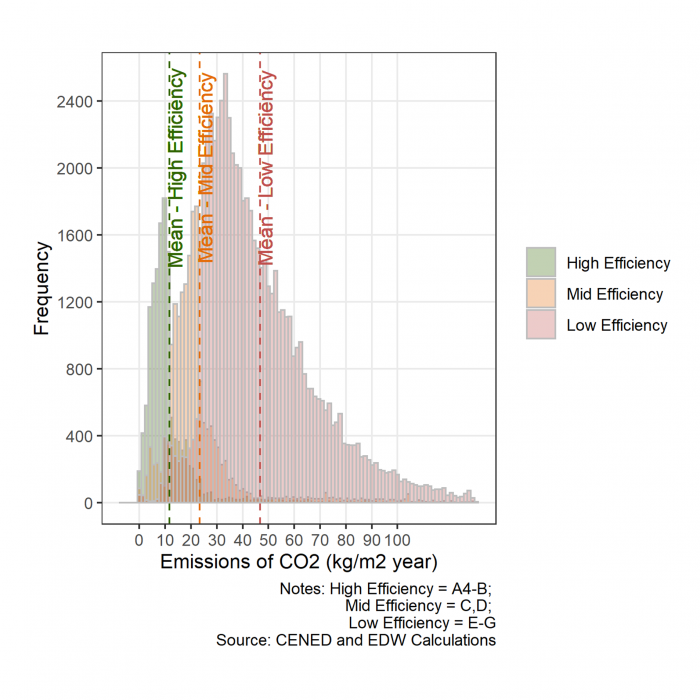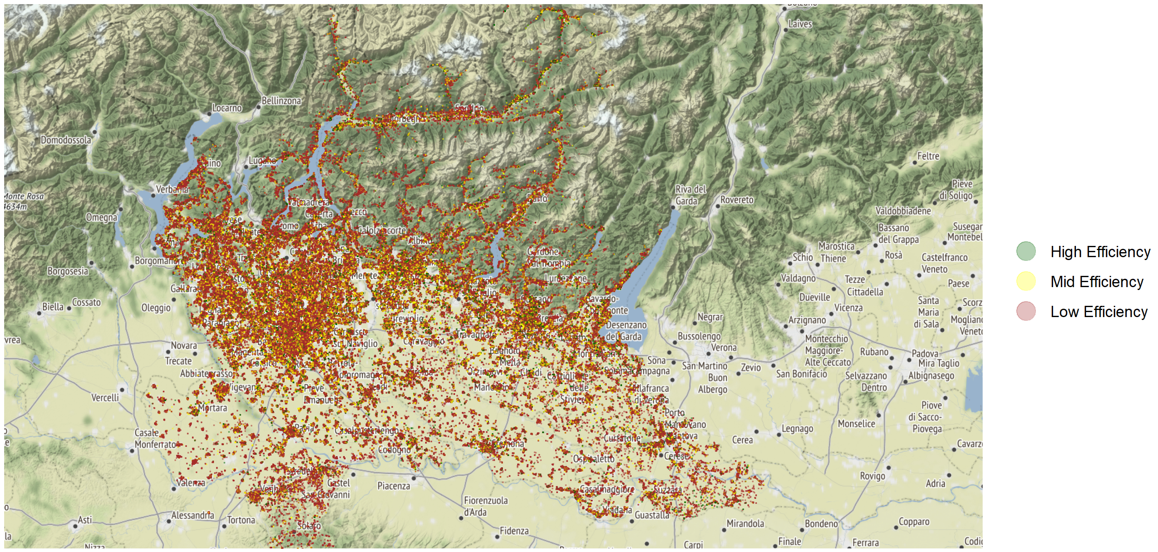Giuditta – EDW’s EPC-Matching Solution Achieves Promising Results
Building on its expertise in the field of data collection, dissemination, and analysis, European DataWarehouse (EDW) is making significant progress with its proprietary energy efficiency information extraction solution, Giuditta. This technical solution allows for the matching of a property’s Energy Performance Certificate (EPC) and other energy efficiency data with the respective financial institution’s mortgage database.
Overcoming legal constraints to achieve better accuracy
Although, until recently, the accuracy of the extractions have been constrained due to the lack of basic property data (i.e., full address information) necessary to match the key parameters for the extraction (i.e., foglio, mappale, subalterno in Italy or the first six digits of the postcode in the Netherlands), the willingness of financial institutions providing mortgage loans to share the necessary property data now permits the achievement of more precise results.
In this regard, the disclosure of full address information has been possible thanks to a specific legal arrangement between EDW and the disclosing financial institutions, focused on the protection of the data exchanged. The Data Protection Agreement enables the lawful processing of the property information provided by financial institutions with the purpose of extracting energy efficiency information for the corresponding property. The data is exchanged through a secure web-based system with a dedicated private area for each institution.
EPC extraction just one of Giuditta’s many benefits
The Giuditta solution not only allows for the extraction of the energy performance certificate (EPC) and its date of issuance but also the extraction of additional efficiency parameters, such as the CO2 emissions associated with the corresponding asset, required for compliance with RMBS reporting obligations under the Securitisation Regulation (EU) 2017/2402 for covered bond transactions, as well as for pools of mortgage loans.
The results of the extractions can be categorised as a perfect match when the cadastral information corresponds to the data in the public EPC databases,or provides an estimate based on the address used. The accuracy of the estimates depends on whether the year of construction of the building is available or not and are, in fact, more precise when the year of construction is present in the dataset provided from the banks. Other estimates for the EPC can be based on median or average EPC for dwellings in a similar area or characteristics.
Needless to say, the Giuditta extraction solution should be performed several times in order to correct data quality issues present in the bank and public databases. Public EPC databases are also dynamic, given that new documentation is uploaded on a regular basis, therefore, refreshing Giuditta results approximately every six months is recommended.

The endeavour to meet new EU targets for building emissions under Fit for 55
Some EPC registers are now considering ways to enrich the information available in their databases to meet the new European Union targets for the buildings emissions (Fit for 55).
An interesting addition currently under consideration is the estimated cost of lowering CO2 emissions for a given building. This could include the cost of installing solar panels, changing the heating and/or cooling pump, or investing in new windows or roof insulation, etc. This information, for example, is already available in the UK. Other potential features to include will depend on the interpretation of the EU Taxonomy for existing and new dwellings
Outlook and further challenges on the green finance horizon
Despite the significant amount of progress being made on the sustainable finance front, the journey is still long. Different interpretations of the General Data Protection Regulation across the European Union is one challenge which has led to inconsistent approaches in making energy efficiency data available. For instance, the EPC is generally not available via an open access source in Spain or Germany, however it is in Italy (for specific regions) and in France (at a national level). A clarification from the European Commission and national data protection authorities on this matter would be welcomed. An alternative approach to facilitate the public disclosure of property energy efficiency data, could be to give property owners the option of consenting to the information being made available via a dedicated public database when they apply for the EPC.

For example, a Geographical distribution is possible by combining CENED’s EPC register data for Italy’s Lombardy region and EDW calculations. Note: High Efficiency = A4-B; Mid Efficiency = C, D; Low Efficiency = E-G
Additional challenges could also arise as the European Commission imposes restrictions on the buildings that can be sold or rented in the future for the two lowest asset classes (F&G). This could create a bottleneck if not enough fiscal and credit incentives are generated, such as the Ecobonus directive in Italy, which facilitates building owners in making improvements to raise the energy performance rating of their property.
Practical initiatives to overcome these challenges are also being developed by regulators. To foster the energy efficiency discussion across the continent, the European Commission introduced a Building Stock Observatory to collect and monitor sustainable data across European national and regional databases. The current revision of the Energy Performance Building Directive provides a boost to the ambition of reducing energy demand and harmonising sustainable reporting practices on a pan-European basis.
Different incentive schemes in Europe could be also potentially channelled towards energy efficiency improvements. The Netherlands, for example, benefits from a unique situation which allows for the fiscal deduction of interest from mortgage payments thanks to the Dutch National Mortgage Guarantee scheme
In an ideal world, the centralisation of EPC information, cadastral data, as well as the credit data could also present a unique opportunity to propose new energy efficient home improvements. An example of this concept already exists in the Netherlands, where specialised companies are using artificial intelligence tools to provide homeowners with detailed property assessments accompanied by a financial plan for the implementation of energy efficient measures.
Given current energy price increases and targets for the reduction of the CO2 emissions, it is therefore important that all players get involved in this important endeavour – from the banking industry to the EPC database providers, all the way to European citizens.
For more information about Giuditta, please email us via enquiries@eurodw.co.uk or join this week’s Italian market workshop webinar, where our team will demonstrate some of the progress they’ve made in matching EPC data for Italy’s Lombardy region. Visit our events page to register for one of our upcoming webinars.